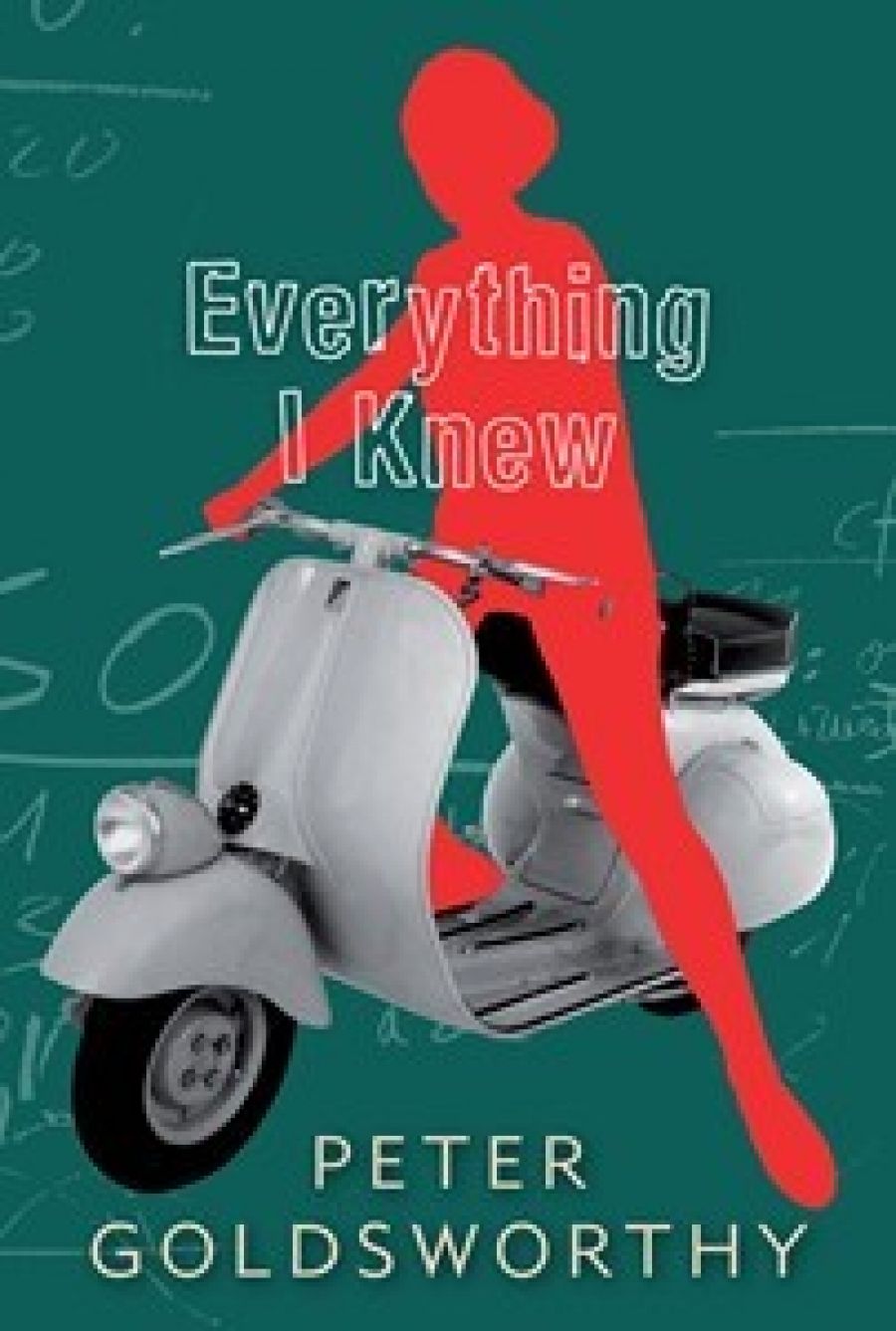
- Free Article: No
- Contents Category: Fiction
- Review Article: Yes
- Custom Highlight Text:
In his latest novel, Everything I Knew, Peter Goldsworthy uses this famous quotation. Indeed, it is so apposite that it might well have provided the epigraph. Everything I Knew is, in part, a self-conscious reworking of Hartley’s The Go-Between (1953). The first-person narrator, Robert Burns, is a naïve fourteen-year-old boy in desperate thrall to a young woman. But where the emotional life of Hartley’s boy protagonist is destroyed by the precipitate arrival of sexual knowledge, Everything I Knew subverts this notion.
The year is 1964 and the setting is Penola, a country town in South Australia. Robbie is a Year Seven schoolboy, precociously intelligent, restlessly pubescent. His father is the town policeman and his mother a well-meaning but stolid housewife. The community is narrow; everyone knows everyone else. At the beginning of the novel, Robbie is beginning to outgrow Billy, his best friend from primary school, an Indigenous boy with a reputation for getting into trouble that Robbie, to a lesser extent (being white), shares.
- Book 1 Title: Everything I Knew
- Book 1 Biblio: Hamish Hamilton, $32.95 pb, 294 pp, 9780241015339
The arrival of Miss Pamela Peach, the new teacher at the high school, changes everything for Robbie. She is young, newly qualified, extremely pretty, and glamorous. The Penolans are agog: they have never seen anyone like her. Miss Peach, intellectual and idealistic, loves literature, poetry especially. She becomes Robbie’s form teacher, taking his class for English, History and Latin.
Almost immediately, Miss Peach takes an unusual interest in Robbie, who is tall for his age, nice-looking and quick to learn. With her encouragement, he begins to write stories (mostly about the future) which she reads and annotates carefully. An inexperienced teacher, she talks to Robbie in ways that are too familiar and he becomes obsessed with her. Billy is completely displaced as Robbie spends his time, usually from within the branches of an old peppercorn tree that overlooks the teachers’ house, watching Miss Peach’s movements, trying to second-guess her feelings. He attempts to read the books she lends him and agonises about her when she is absent in Adelaide. At these times he compulsively writes stories for her. Miss Peach’s housemates, a lesbian couple who constantly drink wine and smoke, laugh openly at Robbie’s monomania. He is so unable to control his passion for his teacher that he begins to stalk her. She, meanwhile, does not see any real danger, for either of them, in his infatuation.
Robbie’s crush on the teacher is believable enough, but there are some serious problems of plausibility with this novel. I do find it a bit of a stretch that the teacher would be lending a Year Seven student the books that she does: War and Peace, for example. We are aware that she is lonely and isolated from the life of the city that she so loves, but it strains credulity that she would show such an interest in a boy so immature when she has in her care older students much closer to her in age. There are other anomalies: the curriculum that Goldsworthy outlines for Year Seven (even in 1964) seems unlikely to have covered the history and poetry of World War I. Another difficulty is presented by the clothes worn by Miss Peach for teaching. Perhaps the dress code in the South Australian Education Department was much more liberal than it was in Victoria but, having myself been a very young teacher at this time, I can clearly recall that, although (ever briefer) mini-skirts continued to be acceptable for female teachers in the 1960s, trousers were not permitted for women at school until the early 1970s.
But these are quibbles, glitches in the mise en scène. Much more momentous is the challenge at the heart of the novel. This is a direct subversion of the strenuously enforced moral code of the last decade that outlawed any kind of sexual interaction between teachers and their students. Of course, in the past things were done differently, although such liaisons were usually between male teachers and girl students. Relationships between male student and female teacher were much rarer, even unimaginable, though perhaps not in the minds of many adolescent boys at the time.
Goldsworthy suggests that, at least for Robbie, no psychic damage accrues from his one sexual encounter with Miss Peach. He actively seeks it and is thrilled by it. The damage that comes later is caused by the shocked overreactions of others and by the terrible (and I thought grossly exaggerated) consequences for Miss Peach. As in The Go-Between, at the end of the novel we see the protagonist looking back. The year is 2007 and Robbie has returned to Penola for the first time since he left at the end of 1964. He muses of his time with Miss Peach: ‘[It] might be the last thing I remember. You will certainly be the last thing I forget. And I would have that ride home in bliss the last of all …’
Perhaps Goldsworthy is suggesting (bravely) that our culture has become overzealous in its defence of adolescent ‘innocence.’ This is an overwrought, undisciplined novel; it indulges in hyperbole and implausible incidents, and often the dialogue between characters is embarrassingly stilted. Its strength, however, lies in its evocation of how an adolescent boy might think and behave. Robbie is a rebellious and risk-taking personality, bored by the confinements of his narrow rural world and hungry for experience. If hardly that of a man, the overwhelming desire Robbie has for Miss Peach is certainly not that of an innocent child.


Comments powered by CComment